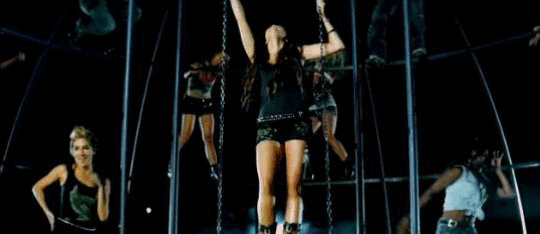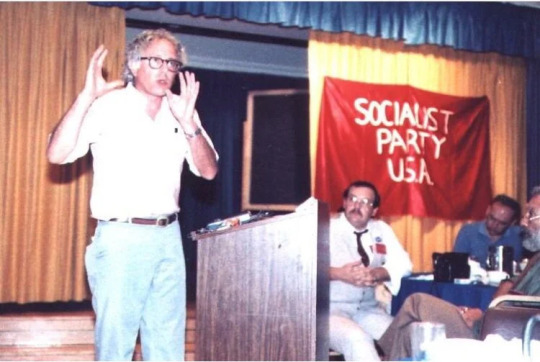#party in the u.s.a.
Text
mikeyway: We had an absolute blast with @letshibachi celebrating @kristincolby! There were lots of laughs and delicious food! Still not over my big catch 🤣 🔥🔥🔥
[Jul 6, 2023]
#mikey way#kristin colby way#staceyey#hayley madison#mitch russo#janelle allisa#brianna kirish#chris kirish#ig#2023#jul 2023#7/6/23#jun 2022#6/25/23#miley cyrus#party in the u.s.a.#song: party in the u.s.a.#vid#originals#eye strain
25 notes
·
View notes
Text
5 notes
·
View notes
Text
So I put my hands up
They're playin' my song, the butterflies fly away
I'm noddin' my head like, yeah (noddin' my head)
Movin' my hips like, yeah (ooh, yeah)
I got my hands up, they're playin' my song
They know I'm gonna be okay (gonna be okay)
Yeah, it's a party in the U.S.A.
Yeah, it's a party in the U.S.A.
4 notes
·
View notes
Text

Miley Cyrus Performs "Party in the U.S.A."
Miley's New Year's Eve Party on NBC
youtube
#party in the u.s.a.#miley cyrus#new year's eve party#singer#music#Youtube#miley's#nbc#celebrities#celebrity#music video
22 notes
·
View notes
Photo










Miley Cyrus - Party In The U.S.A.
3 notes
·
View notes
Text

Hard choice
#palestine#free palestine#gaza#free gaza#israel#from the river to the sea palestine will be free#free free palestine#current events#gaza strip#jerusalem#student#democratic party#democrats#united states#U.S.A#joe biden
1K notes
·
View notes
Text
Miley Cyrus - Party In the U.S.A.
Miley Cyrus – Party In the U.S.A.
Miley Cyrus – Party In the U.S.A. mp3 download, lyrics.
Stream and download this Amazing music Miley Cyrus – Party In the U.S.A. mp3 download, lyrics, instrumental, Video now available for streaming and download at korrectvibes.
So make sure you download the music and share with your friends.
If you’re a music lover, the song is A nice track that should be on your music library.
Miley Cyrus –…

View On WordPress
0 notes
Text
Dance Party U.S. Fuckin' A Maaaan....
#captainpirateface#NIN#Nine Inch Nails#NineInchNails#Dance Party U.S.A.#bipolardepression#music vibes#chemicalimbalance#1980s music#wtf#music videos#music video#electronic music#Trent Reznor#Down in it#I was up above it#Now I'm down in it#music vlog#music visualization#we have such sights to show you#sights and sounds#sights and sounds of tumblr#captainpiratefacelovesyou#Spotify
25 notes
·
View notes
Text

18 notes
·
View notes
Text
LA Times: Philippine Vigilantes Reflect U.S. Strategy for ‘Low-Intensity Conflict’ (1987)
by Peter Tarr
October 11, 1987
NEW YORK — Some weeks after retired Army Maj. Gen. John K. Singlaub told the Senate-House Iran- contra committees about his fund-raising activities on behalf of the Nicaraguan “freedom fighters,” I went to the Philippines to research that country’s communist insurgency.
My travels in the southern islands of Negros, Cebu and Mindanao turned up evidence that the counterinsurgency strategy advocated by Singlaub and other private American citizens on the far right for use in Central America now had taken firm root in the Philippines.
The tactics are used in what Pentagon strategists call “low-intensity conflict” or LIC. They emphasize an “integrated” approach in the fight against communism combining rural civic action and humanitarian aid programs with methods of “unconventional warfare” that Singlaub and others--including the U.S. government--have covertly employed in El Salvador and Nicaragua.
Singlaub’s credentials in “unconventional operations” are well known. A former chief of the Joint Unconventional Task Force in Vietnam, he participated in “Operation Phoenix,” the CIA’s notorious assassination program that resulted in the murder of an estimated 40,000 supposed Viet Cong sympathizers. More recently he served on President Reagan’s Special Warfare Advisory Group, to offer recommendations regarding LIC strategies.
There remains much speculation throughout the Philippines about the purpose of his several recent visits, spanning a period from July, 1986, to this past February. The former commander of U.S. forces in South Korea insists that he went to the Philippines to search for buried treasure. A number of his critics say the general’s real mission was to help organize civilian militias to be employed in the fight against guerrillas of the communist New People’s Army (NPA).
Many questions have yet to be answered, but one thing is certain: Vigilante justice has captured the imagination of the mass of Filipinos. It is a development that has disturbing implications.
In the theory of low-intensity warfare, the establishment of paramilitary groups is a key element in the battle for the sympathies of people living in rebel-contested areas. Their proliferation is thought to deprive communists of “mass-base” support, and thus contributes to a broader effort to isolate and demoralize insurgent forces.
Several commanders of the Armed Forces of the Philippines (AFP) assured me that most vigilante groups were unarmed. But at every turn I saw deadly weapons: M-16 automatic rifles, fragmentation grenades, homemade pistols and shotguns and a bewildering variety of machetes and bolo knives. And at every turn, the men, women and children who wielded these weapons were eager to tell me that they were “prepared to die” to defend themselves against communism, which many of them called “the godless ideology.”
On a street in downtown Davao, a sprawling city of 1.2 million on Mindanao’s southeast coast, the bolo-toting “Midnight Attack Commandos” of the “Far Eastern Democratic Restoration Bureau” boasted about dismembering captured communist guerrillas while one of their leaders supplied me with leaflets published by an evangelical ministry in Arkansas that posed these burning questions: “Are the IRS, FBI, U.S. Dept. of Labor, the Mafia and labor unions part of the Vatican? Is the Pope the superboss of all government agencies as well as the Vatican?”
How did this literature get to Davao, 10,000 miles from its point of origin in Alma, Arkansas? Did the vigilantes have American contacts? Were they acting in concert with the Philippine military, or on their own? Where did their weapons come from? What were their sources of financial support?
Lt. Col. Franco Calida, police chief of Davao and the acknowledged “godfather” of the first and most successful vigilante group, the Alsa Masa, insisted that his and other paramilitary groups had arisen spontaneously. Their popularity, he said, reflected widespread dissatisfaction with the communists’ urban terror campaign conducted in the city between 1981 and 1985. Indeed, Davao had been the “murder capital” of the Philippines in those years, a city where more than 5,000 people had met violent deaths. Many of the murders were “insurgency-related,” although the activities of criminal gangs also accounted for a good deal of the carnage.
Alsa Masa, which in the local dialect means “Masses Arise,” was organized by the leader of one of those gangs early in 1986. But the movement went nowhere until Calida assumed his Davao command in July, 1986. It was at that time that Calida received a visit from Singlaub. They “chitchatted,” Calida said, but did not discuss Alsa Masa. Nevertheless, in the months following Singlaub’s visit, Alsa Masa grew exponentially. It now claims 10,000 members. “The Alsa Masa was never a CIA project,” Calida told Filipino journalists several months ago. “It is the product of abuses of the communist New People’s Army. The people were left with no choice but to band together to protect themselves.”
In Davao, virulently anti-communist radio announcer Jun Porras Pala admitted that the vigilante groups lumped together all manner of riffraff, from members of criminal gangs to adherents of fanatical religious cult groups.
In Negros, Cebu and Mindanao there were ominous signs that anti-communist fanaticism was putting innocent people in danger. In Davao, the houses of people who did not join or make financial contributions to Alsa Masa (a practice one member called “extortion for democracy”) were marked with the letter X. Anti-communist broadcasters threatened supposed sympathizers over the airwaves.
In all three islands, liberal members of the Catholic Church had been threatened both by vigilantes and military officials. During my stay in Negros, 35 clerics and newsmen were accused of being NPA sympathizers by a local military commander, and had received death threats in the mail. A similar scenario was simultaneously unfolding in Cebu. And in Davao, the Redemptorist Church was strafed from a passing truck late one August night. Earlier, Catholic members of the congregation had been called “redemterrorists” by broadcaster Pala. Redemptorists in Cebu had been similarly branded.
Why did President Corazon Aquino, an uncommonly religious woman, agree to endorse the vigilante movement? The answer lies partly in a meaningless distinction she makes between armed and unarmed vigilante groups. Aquino favors the mobilization of unarmed citizen patrols, called Nakasaka, that warn the military of NPA activity. She favors these groups, but does not proscribe the activities of armed groups.
American officials may have influenced Aquino’s policy. On March 16, 1987, she ordered a government-trained militia, the Civilian Home Defense Force, “and all private armies and other armed groups” to disband. The CHDF, with 70,000 members nationwide, had been active since the 1970s in the fight against the NPA, but its ill-disciplined members had been blamed for many of the military abuses committed against civilians in counterinsurgency operations.
A phase-out of the CHDF was mandated in the new Philippine constitution, adopted in February. But soon after Aquino issued the order to disband paramilitary groups, she rescinded it. The Philippine military, led by Gen. Fidel Ramos, was lobbying hard for retention of the CHDF. So was Local Goverment Secretary Jamie Ferrer, slain in August. Aquino and her military had been repeatedly lectured, directly and indirectly, by high-ranking U.S. officials on how to fight the communists. One such lecture was delivered on March 19, 1987, by Richard L. Armitage, the assistant secretary of defense for international security affairs. He offered a blunt critique of AFP tactics in testimony before the House subcommittee on Asian and Pacific Affairs.
Armitage’s remarks clearly indicated American impatience with Aquino’s policy of reconciliation, in effect during her first 12 months in office. Even after the failure of peace talks with the radical left and the collapse of a cease-fire in the AFP-NPA war that had held for only 60 days, Aquino continued to offer an olive branch to the left. On Feb. 28, she proposed amnesty and rehabilitation for rebels who would lay down their arms, in the interests of “healing the wounds of our nation.”
On March 18, a time bomb exploded at the Philippine Military Academy. It was apparently intended to kill Aquino, who was to address the academy’s graduating class four days later. When commencement day arrived, the Philippine president unveiled a new strategy--one that might have gratified Singlaub himself. “The answer to terrorism of the left and the right is not social and economic reform, but police and military action,” she said, turning her back on a philosophy she had espoused since coming to power.
It was in this climate that Aquino rescinded her order to disband the paramilitary groups. In keeping with her new policy of “total war” against the communists, and in light of her growing reliance on Ramos, who repeatedly put down attempts by disgruntled AFP officers to take over her government, Aquino found herself, by the end of March, implementing the very counterinsurgency policies she had resisted for more than a year. She was now prepared to wage low-intensity warfare.
Her shift to a hard-line policy is likely to encourage a similarly militant response from the radical left. But even more important, the legitimation of vigilante “justice” will most likely serve to accentuate a culture of violence that has prevailed for decades in the Philippine countryside. At the core of the vigilante movement are incompetent CHDF commandos, religious cultists and members of private armies that flourished during the Marcos years.
The Philippines needs more than civic action and “humanitarian” aid programs carried out by civilian and military authorities waging low-intensity warfare. The country needs structural reforms, the most important of which is land reform. As Aquino often noted during her first year in office, the insurgency has economic and social roots. It will continue to flourish--no matter how many vigilantes are mobilized--unless the root causes are addressed.
Source: LA Times
Links and notes below
Moonies Support Vigilante Violence in the Philippines Around 1986/1987 - excerpts from Belina A. Aquino’s “The Philippines in 1987: Politics of Survival”
Marti found that the Reagan administration sought the help of CAUSA International to support US policy in Nicaragua. It might be mentioned that the Moonies and CAUSA have conducted expense-paid seminars and conferences in Washington, D.C.; Manila and other places, inviting well-known names in academic, religious and political circles. Among the CAUSA’s top brass are Cleon Skousen, a Mormon Church leader, Douglas MacArthur II, and Bo Hi Pak, the chairman who has acknowledged CIA funding. This is just another form of counter-insurgency, but it tries to minimize direct military intervention in favor of small “grassroots” efforts combining socio-economic, civic action, psychological & political objective.
In 1985 the Washington Times sponsored a fund for the Contras who committed atrocities, and trafficked drugs to the US
The WACL and CAUSA’s Role in the Ruthless Violence of US-Philippines Counterinsurgency
CounterSpy: Moonies Move on Honduras (1983)
The UC should be held responsible for supplying weapons that killed young Filipino activists
How has the Moon network played a role in the post-9/11 U.S. Imperialist strategy?
The Unification Church and KCIA: Some Notes on Bud Han, Steve Kim, and Bo Hi Pak
The Unification Church and the KCIA – ‘Privatizing’ covert action: the case of the UC
The Broad Counterinsurgency Strategies of the US in the 80s, and a Glimpse into the UC’s Role
#iran-contra#nicaragua#contras#John K. Singlaub#u.s.a.#u.s. government#AFP#armed forces of the philippines#npa#new people's army#ndfp#national democratic front#cpp#communist party of the philippines#anti-communism#paramilitary#violence#cia#alsa masa#Operation Phoenix#ronald reagan#counterinsurgency#1986#1987#military#u.s. military#the philippines#philippines
4 notes
·
View notes
Text


Instagram story by mikeyway
[Jul 6, 2023]
#mikey way#kristin colby way#rowan way#kennedy way#ig#ig story#2023#jul 2023#7/6/23#jun 2023#6/25/23#miley cyrus#party in the u.s.a.#song: party in the u.s.a.#vid#originals#eye strain
18 notes
·
View notes
Text
for @tommyswilliam
Of all the games littered around the festival, Valentina thought she was most adept at the game of denial. She didn’t really want to admit that she was excited about this ( ...whatever this was )— nor did she want to acknowledge that little pep in her step as she went looking for Tommy. And yet, here she was, feeling some semblance of elation at the thought of spending some time with her ex-boyfriend. If someone would have pitched this to her months ago, Val would have laughed. She’d probably laugh about it now since it felt so ridiculous, but it also felt nice? That was a lot of stuff she’d have to unpack much much later.
Right now, she would focus on weaving through the crowd of children that should have really been on a leash. Lucky for her, they didn’t seem to wanna hang around all the booths hosting the games; Val had seen a good chunk of them hanging around the Gravitron instead.
It must be thanks to that poor excuse for an amusement park ride that he’s so easy to find, right by the milk bottle knockdown. Valentina thought it fitting to start the night there. So she’s shifting her pace into a more purposeful walk ( because Val Garrido is not a runner ), and sliding up next to him. Being that all that stuff was yet to be unpacked, she can’t decide between a hug or no-hug and when in doubt, she usually goes for the latter. “Hey! You ready to play some games, win some prizes?” And Val can’t help but think of how odd it is, that this is the first time they’d found time for each other during the yearly festival.

12 notes
·
View notes
Text
for @camxwhite
Okay so, he knows he isn’t to blame here— Elijah didn’t lock the cuffs on Cameron nor did he drag her all the way to the station’s holding cells, but he was part of the system that had consistently treated Cameron as less than she deserved. And just like he’d folded and joined the Sheriff’s Department at his father’s request, he’d gone and stood on the sidelines as it happened. Eli knows that one was out of his hands too, but arguing that point wasn’t going to do him any favors. With that in mind, deep fried Oreos might.
Honestly, he really hopes they do because he had to wait in line for a really long time to get them; just when did those things become so popular? And more importantly, when had all the kids in Coolsville become so rude? He wasn’t anything like that when he was running around in his teens.
But that wasn’t even the bigger issue here, he’d been looking around for Cam for so long, that by the time he’d found her the Oreos were...not-hot. Eli hopes they’re still an adequate peace offering when they’re not so hot they’d burn your tastebuds off. So he walks over to where she’s standing near the drop tower, with his best smile and some lukewarm Oreos, “Cameron, you like all that tooth-rotting sweet stuff, right, because I have something for ya,” ( translation, please don’t tell me that queue was for nothing ).

3 notes
·
View notes
Text










Miley Cyrus - Party In The U.S.A.
3 notes
·
View notes
Text

USA T-shirt Design
Material: 100% Combed Cotton (Bio-Washed and Pre-Shrunk)
Neck: Crew Neck
Sleeves: Short Sleeves
Features:
• Unisex Classic Pullover Hoodie
• Unisex Classic Crewneck Sweatshirt
• Women's Classic Tee
• Classic Long Sleeve
• Comfort fit
• Classic Crew Neck T-Shirt
• Premium Ring-Spun Cotton T-Shirt
• Mugs
Wash Care: Machine wash. Wash in cold water, use mild detergent Dry in shade Inside Out Do not iron directly or scrub on print Do not bleach, do not tumble dry. Dry on flat surface as hanging may cause measurement variations
Please Note: Colours may slightly vary depending on your screen resolution.
#usa#gymnastics#sports#national team#routine#training#gymnastics tricks#usa gymnastics#gymnast#gymnastics tips#athlete#motivation#lessons#amazing#gold medal#professional#qualifying#miley#cyrus#party#the#u.s.a.#hollywood#records#pop#facts#fact#contries#world#canada
1 note
·
View note